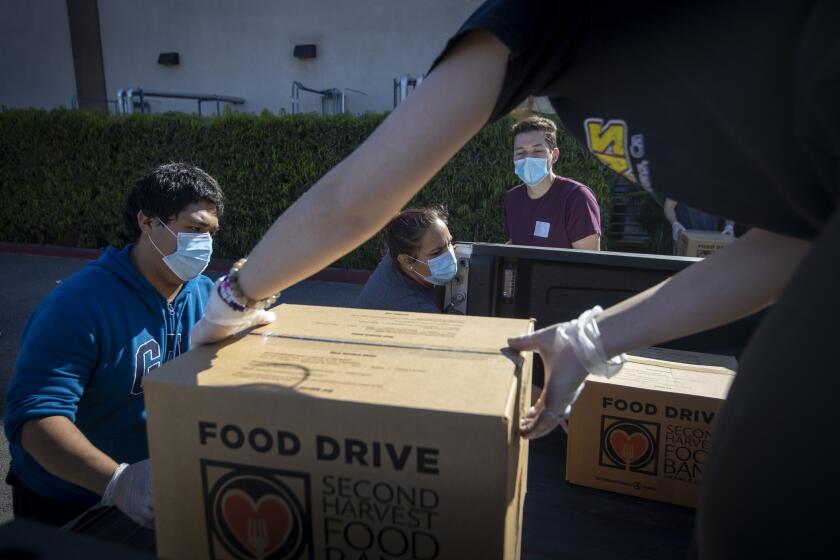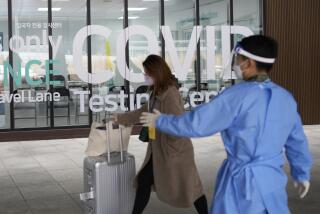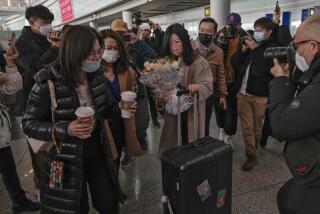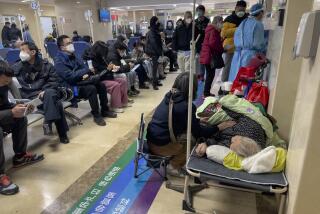Asian countries impose new restrictions as coronavirus cases come roaring back
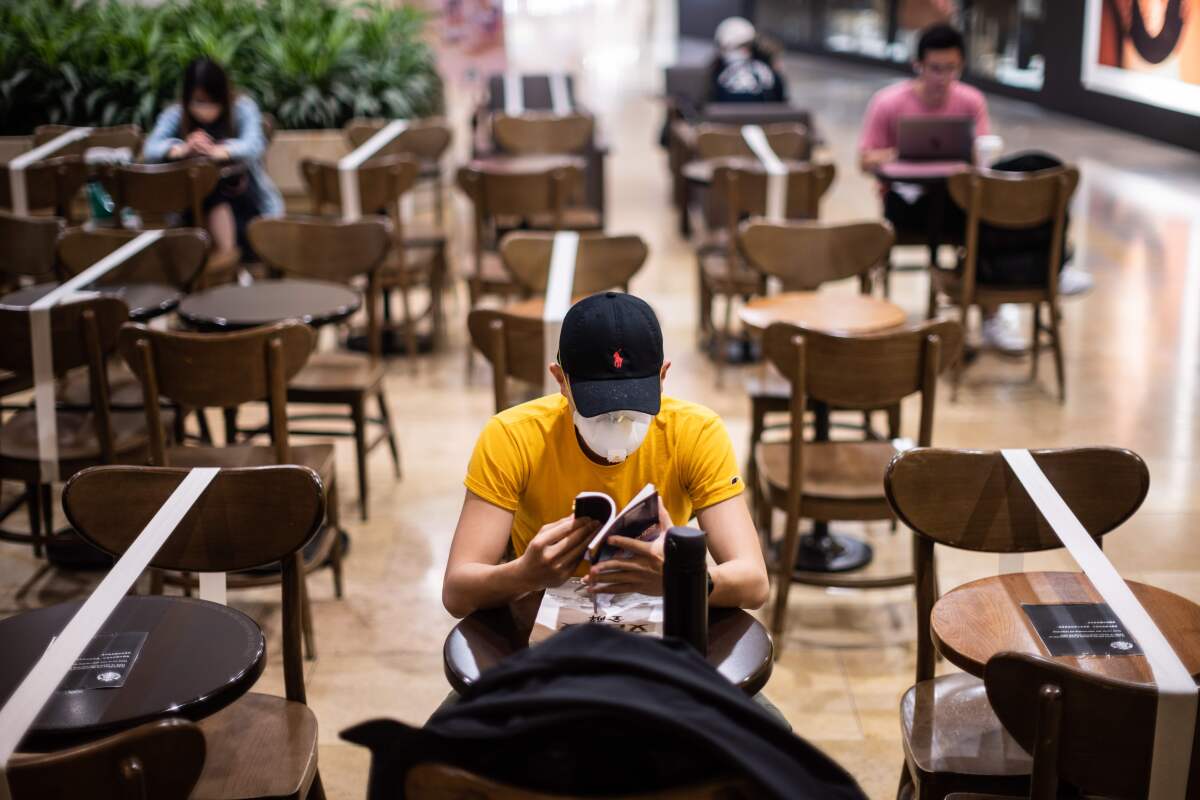
- Share via
SINGAPORE — Vietnam has banned public gatherings of more than two people. Hong Kong has closed nightclubs, karaoke bars and mah-jongg parlors, and deployed health inspectors to check that restaurants are seating parties at least six feet apart.
And Singapore on Friday said that schools and nonessential businesses would close for a month, a sweeping shutdown it had avoided until now.
Suddenly, Asian governments that appeared to be bringing the coronavirus under control are imposing new social restrictions as the numbers of infections — many from overseas — continue to rise.
In places that took early, effective action against the COVID-19 outbreak, the stepped-up measures in recent days are a sign that fighting the disease will take much longer than anticipated. They also show that governments must adapt their responses as the threat from the virus evolves, epidemiologists say.
“We have to find measures that can control, slow down the virus, and do so in a way that is sustainable — not just for two weeks, two months, but all the way through to the end of the year,” Lawrence Wong, co-chair of Singapore’s coronavirus task force, said this week.
Updates from April 2 from our reporters in California and around the world
The novel coronavirus “is now so widespread that it is highly unlikely that our current control measures would be able to drive this virus out of the human population,” said Ooi Eng Eong, deputy director of the Emerging Infectious Diseases Program at the Duke-NUS Medical School in Singapore. “Without a vaccine or antiviral drug, we should expect to deal with this virus [for] the long haul.”
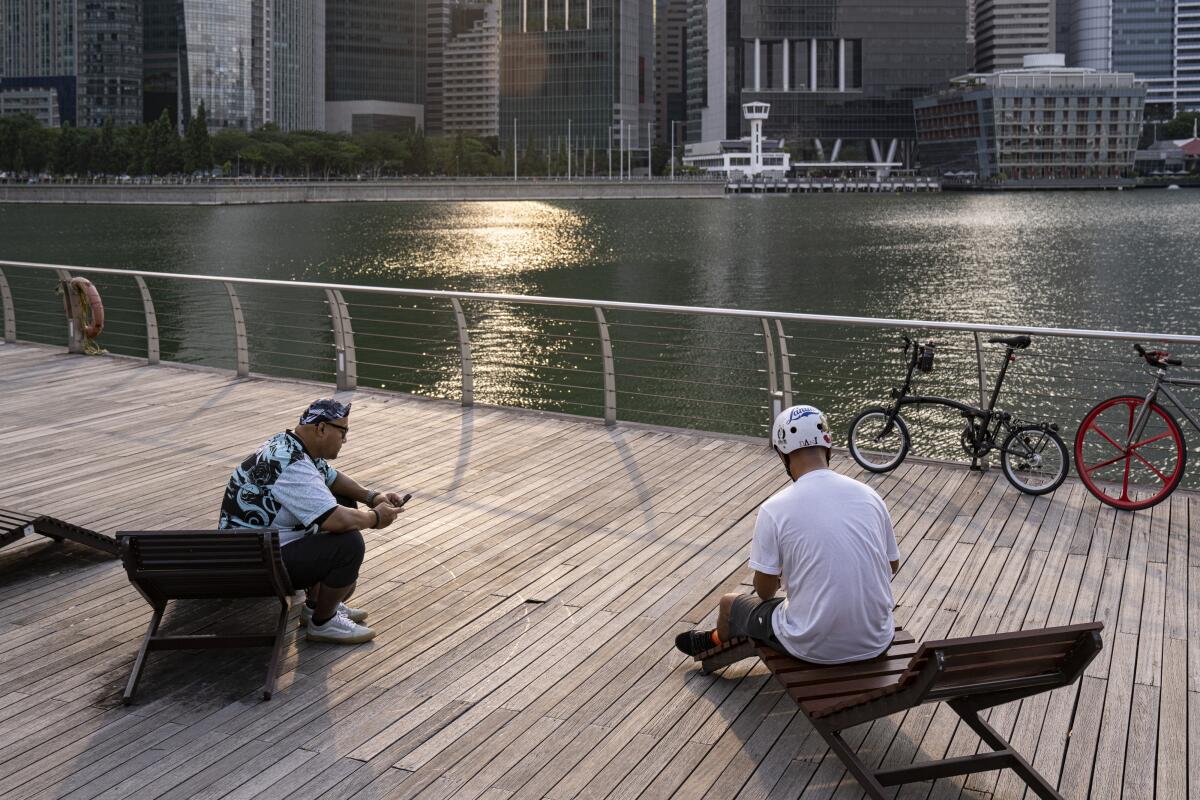
That has become clear as several Asian countries see infections rising rapidly, most commonly in people who traveled to newer hot spots such as the U.S. and Europe.
Singapore and Vietnam, despite their proximity to the source of the outbreak in China, managed to keep a lid on coronavirus cases starting in January thanks to vigilant traveler screening, contact tracing and quarantining of suspected infections.
Hong Kong quickly closed schools, museums and government buildings, although residents were otherwise spared the hugely disruptive shutdowns and shelter-in-place orders now in force in much of the U.S.
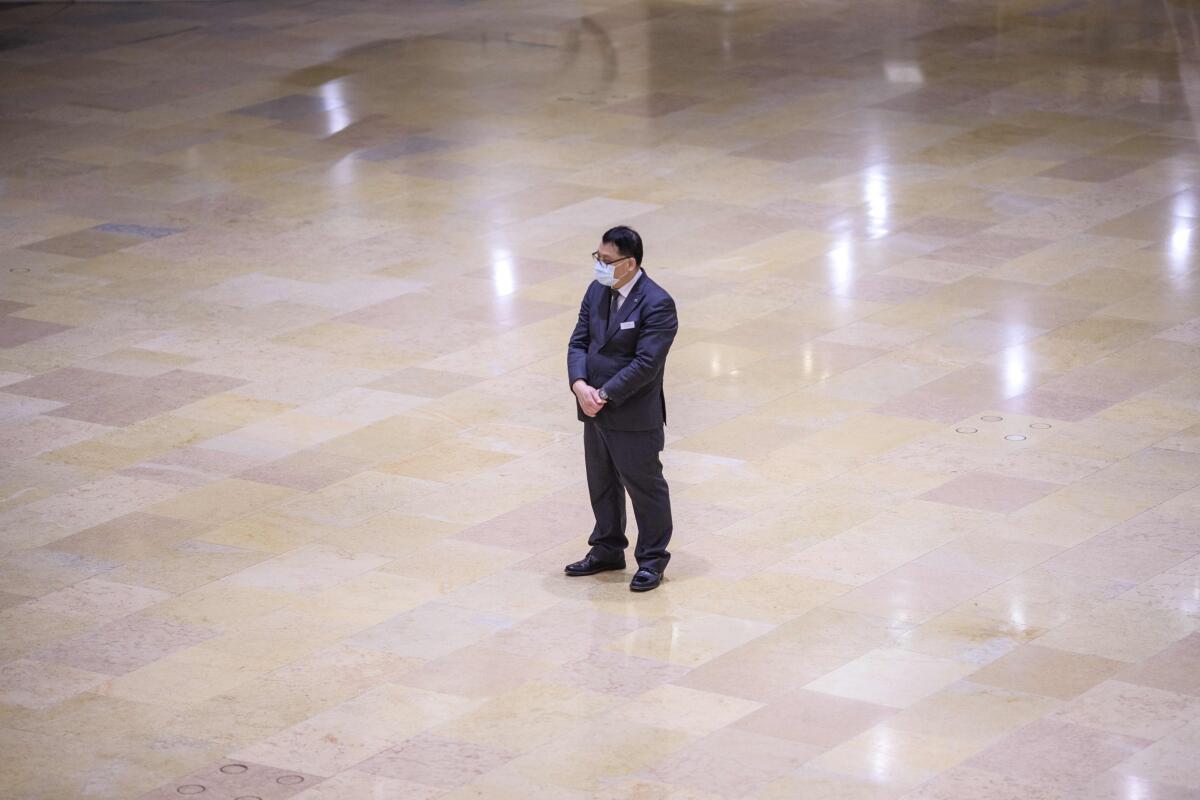
As COVID-19 cases surged in the U.S. and Europe, Asian countries also began to close their borders. But starting in early March, residents who were living or studying abroad rushed back home, bringing with them a second wave of infections.
In the last two weeks, the number of cases in Singapore has quadrupled to more than 1,000. Most were recent travelers who were immediately placed in isolation to reduce the risk of transmission.
New infections are also emerging in people with no recent travel history, a worrying sign that the disease continues to circulate in the community more than two months after Singapore’s first controls were implemented.
On Thursday, Singapore notched 74 new infections, its highest single-day total, 54 of them from transmission within the community. Ten were linked to a senior citizens’ home, prompting the government to announce a monthlong ban on visitors to nursing homes island-wide.
Experts say countries must be alert to a resurgence of the virus when existing measures lapse or people start to grow complacent.
“With the second wave, we are finding it a lot harder to control local spread as well as stop imported cases,” said Paul Ananth Tambyah, Singapore-based president of the Asia Pacific Society of Clinical Microbiology and Infection. “That is something that all countries will probably eventually discover.”
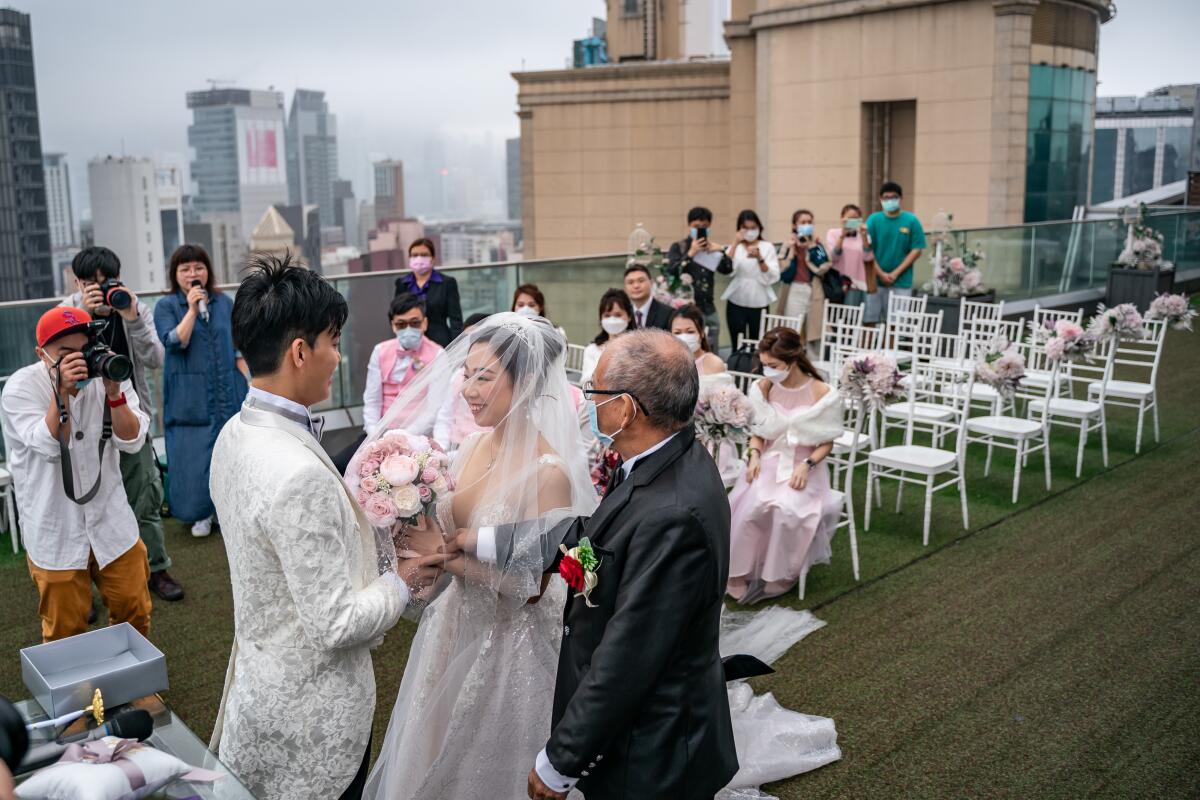
Hong Kong, known for its nightlife, last week banned gatherings of more than four people but let bars and pubs remain open, even as dozens of infections were linked to such venues. On Thursday, as the government recorded 37 more cases to bring its total to 802, watering holes were ordered to close for two weeks.
Vietnam, among the first countries to block travel from China and close schools, went three weeks without recording a new infection. In the last month, however, the number of confirmed cases has risen from 16 to more than 220.
The communist-led nation has since banned all foreign visitors and ordered a two-week lockdown starting Wednesday, a dramatic tightening in what had been one of Asia’s fastest-growing economies.
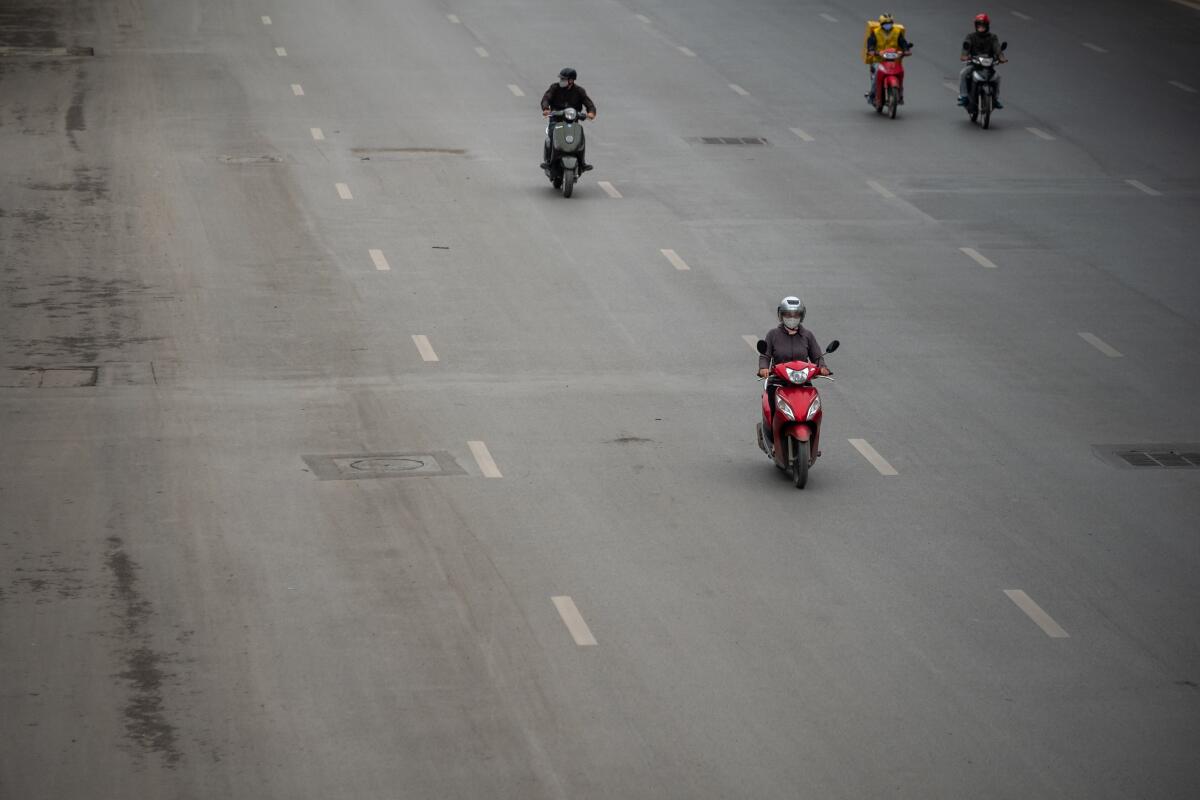
Experts say that Vietnam is still seeing mostly clusters of infections, meaning the virus isn’t spreading in the population in a significant way. Vietnam’s rulers are hoping that tough measures will keep its still-developing health system from being overwhelmed with COVID-19 patients.
“I’m sure that’s what’s on their minds, that if they can prevent transmission now perhaps they can have an easier time in the future,“ said Todd Pollack, an infectious diseases specialist at Harvard Medical School who leads a Harvard-based health initiative in Hanoi.
“But the borders can’t stay closed forever. And if other countries haven’t had that same level of success against the virus, you’re going to continually deal with imported cases.”
In prosperous Singapore, which had earlier banned large gatherings and instituted temperature checks at high-traffic buildings, stricter measures implemented last week limited private gatherings to 10 people. Authorities suspended all religious services and closed bars, karaoke lounges and nightclubs, and warned that anyone standing within three feet of another person in line could face up to six months in jail.
Officials also ordered commercial establishments to ensure three feet of space between patrons. At cafes and shopping centers, employees taped a large “X” on every other seat, denoting where people aren’t supposed to sit.
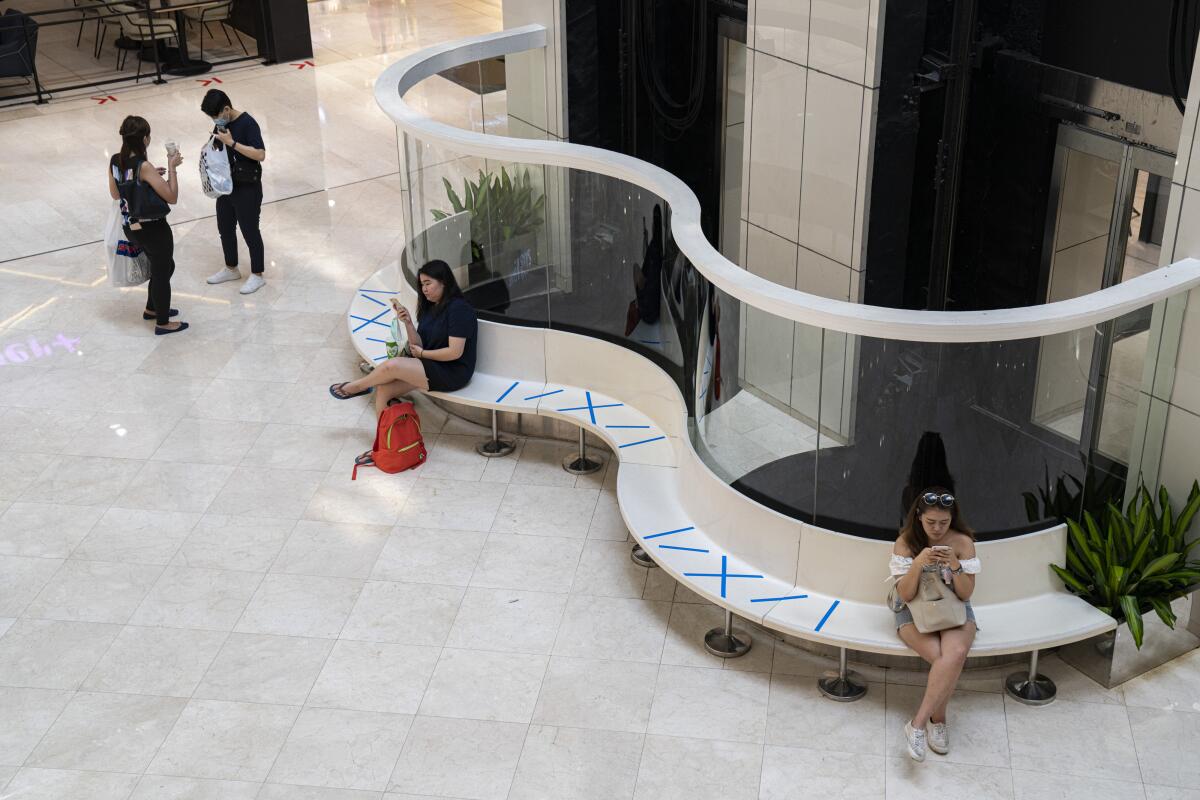
But on Friday, Prime Minister Lee Hsien Loong said the continued rise in community infections warranted new, even more aggressive measures. He called on citizens to “bear with the painful adjustments we have to make” with the monthlong shutdown of schools and nonessential businesses.
Experts say Singapore’s gradual approach had allowed life to carry on more or less as normal for a population accustomed to efficient public services. But officials began to believe that people weren’t taking the pandemic seriously enough.
At a news conference this week, Wong, the coronavirus task force chief, lamented that some Singaporeans were still asking whether they could go to malls or have parties of fewer than 10 people. Such requests were “missing the point” of the need for social distancing, he said.
Ooi at the Duke-NUS Medical School said all governments had to balance society’s patience with what was needed to tame the virus.
“Working out sustainable disease control measures, which may be different from city to city due to local nuances, are just as important as implementing emergency measures,” he said.
More to Read
Updates
3:55 a.m. April 3, 2020: The story has been updated to reflect more aggressive measures announced by Singapore on Friday.
Sign up for Essential California
The most important California stories and recommendations in your inbox every morning.
You may occasionally receive promotional content from the Los Angeles Times.
